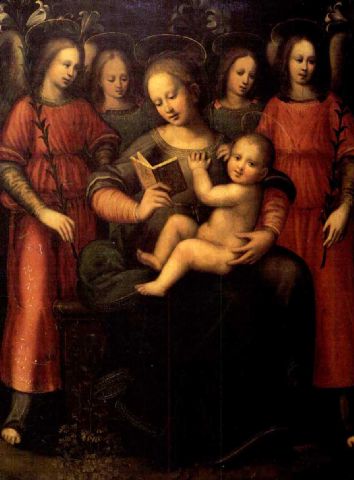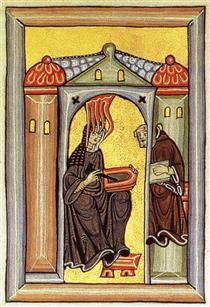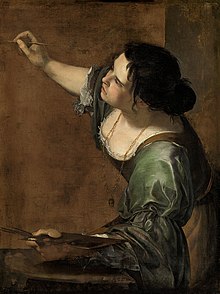The middle ages were moderately a rough era, especially for women. Women did not possess the same rights as men. Almost everything on a daily basis was considered a hardship for women. Men were required to be the breadwinners of the household while women were expected to stay home, cook and clean, and take care of the children. In general, men were more superior than women. “The head of every man is Christ, and the head of the woman is the man.” (Guerrilla Girls, 19) There was a limited source for education for both genders but more so for women. Books were kept in the church and for the rich. “The Christian Church, as the dominant force in Western medieval life, organized communication and culture, as well as religion and education.” (Chadwick, 43) Nuns were able to obtain education because there were books at churches. They could get more educated than women at home as they were the only ones who can read and write as women at the time.
 |
| Detail of The Effects of Good Government, a fresco in the City Hall of Siena by Ambrogio Lorenzetti, 1338 |
As for art, churches and cathedrals were the most artistic achievements at the time. But there were other forms of art as well. “Religious objects, illuminated manuscripts, and tapestries, to name a few, all made by artists working in guilds, collective workshops, and religious communities.” (Guerrilla Girls, 19) There weren’t many known artists; they were nameless. In Fact, the artists of the era worked and produced art for Kings and Nobles. “These nameless artists labored in the service of abbots, abbesses, kings, and nobles, who dictated the content of the work and directed its production.” (Guerrilla Girls, 19) There was a substantial amount of women artists working for either business owned by family members or as nuns in convents. Most artists of the middle age era did not sign their work and did not receive credit. Instead, the patrons were accountable for the works and won praise for pieces they did not create. In a sense, since it was difficult to attribute specific art to individual people, male artists were faintly treated the same as female artists during this era.
Soon, the period known as the Renaissance came along and reshaped Europe culturally. Different forms of media and all sorts of creativity were being recognized. From sculptures to paintings to many types of art, were being generated. It was the era of opportunity for individuals with talent in the art genre. A few women artists were rising as well. However, most people to this day generated the assumption that art in the Renaissance was an “all-guys game” (Guerrilla girls, 29). Unless they were born in a family who were artists, it was hard for women to pursue art. It was hard for women to make money off it too. Sofonisba Anguissola was the first well-known women artist of the Renaissance. Her father believed women should be educated. “He sent one of her drawings to Michelangelo.” (Guerrilla Girls, 29)
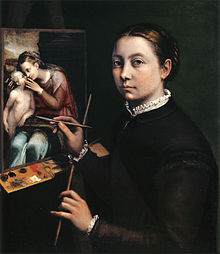 |
Self-Portrait of Sofonisba Anguissola, 1556, Lancut Museum, Poland
|
Bologna, during the Renaissance period, was the most popular city in Europe that supported women artists. Unlike other cities, Bologna allowed the women to be educated. Elisabetta Sirani, an artist from Bologna, was so talented as a painter that she was accused of signing her name to her father’s work.
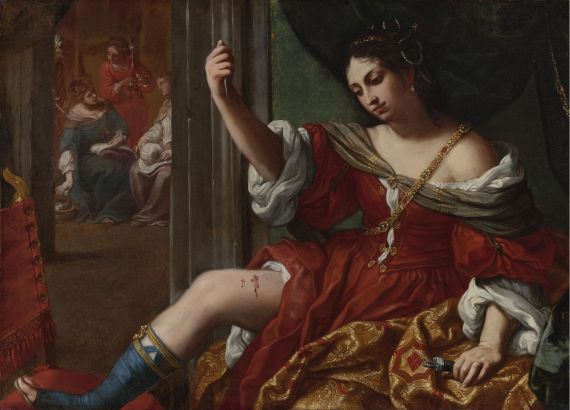 |
Elisabetta Sirani, Portia Wounding Her Thigh, 1664
|
As for laws and regulations, the rules women were required to follow were still stringent. They still couldn’t vote as they were denied all political rights. Women were to perform the duties of a housewife. Peasant women were to work alongside their husband as well as fulfill the roles of a housewife, taking care of the family and house. Even women of the highest class, although assisted by servants, stayed home, cooked and cleaned and engaged in housewife activities. From childhood, the parents controlled the lives of his or her daughter. Women could not choose who they wanted to marry. Instead, their parents decided for them and left them miserable for the rest of their life. The husband would then control over her till she dies or he died himself. If a women chose not to marry, she will still not get her full independence but rather be dependent upon and live with a relative, or live in a convent. A lot of women chose that option, to live in a convent and become a Nun. That way they were able to access and acquire education and knowledge. A nun was the only career women can pursue at this time.
Soon after came the 19th century. Women’s struggle for equal rights began. Also, during this period, “male painters began to objectify the naked female body as never before.” (Guerilla Girls, 47) Thus the term “male gaze” was established and given meaning. Men simply created and viewed art with women being a naked object, for their pleasure. Although all of this was occurring, women also grew as artists and began to get more recognition for their works. The world was advancing with its new technology, and new tools made art production easier. The invention of the camera slightly threatened painters and their work because it would overtake the purpose of painters and paintings.
Work Cited
Chadwick, Whitney. Women, Art and Society. Thames and Hudson, 2015.
The Guerrilla Girls' Bedside Companion to the History of Western Art. Penguin
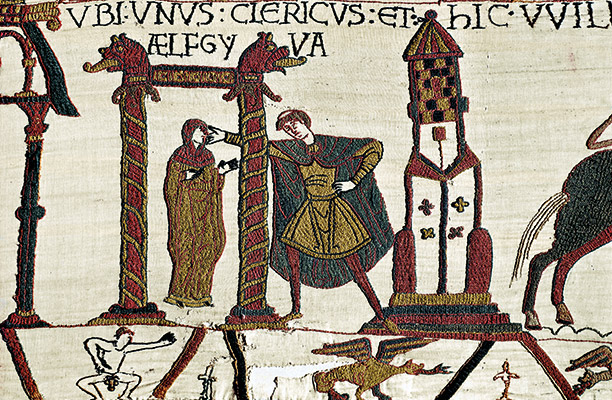 At this point in time, sewing was a female occupation. A particular scene of Aelfgya illustrates how under Feudalism, "the works structure and language displace women from power" (Chadwick 48). This is a good representation of how women were situated outside any form of political power, and as nuns they were foreseen to follow the strict regulations of the clerical celibacy. Important matter about the middle ages is that all art was commissioned by the church; as such, the artwork made was not only very religious, but names were not necessarily attached to the artwork. An example of this is The Beatus Apocalypse of Gerona, which was worked by both male and female monasteries. In this regard, men were “as forgotten as the females” (Guerrila Girls 20).
At this point in time, sewing was a female occupation. A particular scene of Aelfgya illustrates how under Feudalism, "the works structure and language displace women from power" (Chadwick 48). This is a good representation of how women were situated outside any form of political power, and as nuns they were foreseen to follow the strict regulations of the clerical celibacy. Important matter about the middle ages is that all art was commissioned by the church; as such, the artwork made was not only very religious, but names were not necessarily attached to the artwork. An example of this is The Beatus Apocalypse of Gerona, which was worked by both male and female monasteries. In this regard, men were “as forgotten as the females” (Guerrila Girls 20).